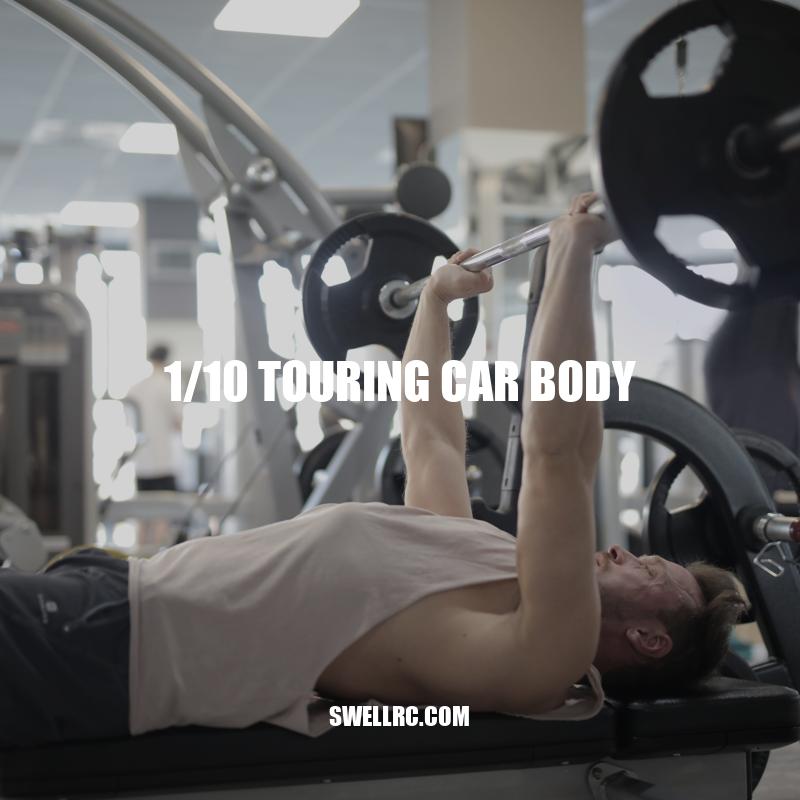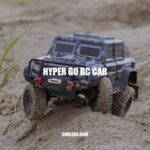Exploring 1/10 Touring Car Body Shells: Types, Materials, and Aerodynamics
Touring cars are a popular category of remote-controlled cars, and the world of 1/10 touring car bodies is diverse and exciting. These bodies are available in several types, materials, and designs, making them a crucial element of a touring car’s customization. Touring car bodies not only add an aesthetic value, but they also play a significant role in the car’s performance. The body of a touring car can create downforce, which allows the car to maintain stability at high speeds and sharp turns. Therefore, choosing the right body for your 1/10 touring car can make or break your driving experience. In this article, we will discuss the different types of 1/10 touring car bodies, their material options, aerodynamic features, and their installation process. By the end of this, you should have a deeper understanding of how 1/10 touring car bodies impact the car’s overall performance and appearance.
Types of Body Shells
There are several types of body shells available for 1/10 touring cars. Here are some popular types with their unique features:
- GT bodies: Designed to mimic the appearance of real-life sports cars, GT bodies have a sleek design with elongated front ends and streamlined roofs. They also come with rear wings and hood scoops to create increased downforce.
- Touring bodies: These bodies are more streamlined and have a balanced shape. They are designed for speed and have a more aerodynamic design than GT bodies.
- Drift bodies: Drift bodies are designed with an edgy and aggressive look. They are built for sharp turns and maneuvers, with a design that helps keep the car stable during slides.
You can find various types of body shells for your 1/10 touring car on websites like Amain Hobbies, Tower Hobbies, and RC Planet. Touring car body shells usually come with mounting hardware and window masks to make the installation process more accessible. It’s essential to pay attention to the details when choosing a body for your touring car. The type that suits your driving style and performance goals will provide the best experience.
Materials Used for Body Shells
Body shells for 1/10 touring cars are commonly made from polycarbonate, but they are also available in other materials like ABS or fiberglass. Here are some characteristics of each material:
| Material | Characteristics |
|---|---|
| Polycarbonate | Durable, lightweight, and can be easily shaped into various designs. Can be painted on the inside to create a customized design as it is transparent. |
| ABS | Dense and rigid, providing better resistance to impacts and harder to break than polycarbonate. Not so easy to modify and shape. |
| Fiberglass | Providing a more rigid and stable platform for high-performance setups, fiberglass is more durable than polycarbonate, but heavier. It is not as customizable, but it can become an excellent solution for those who need a durable and robust shell. |
Polycarbonate bodies are popular because they provide low cost and resistance to crashes. Besides, they provide excellent protection for the car’s internals. However, ABS and fiberglass bodies might provide better performance and durability, but they typically cost more.
On the other hand, the quality of the material and the manufacturing process can affect the final cost of these products. You can find body shells of different materials at hobby stores like AMain Hobbies and RC Planet.
Is polycarbonate used in cars?
Yes, polycarbonate is used in cars for making bumpers and headlight lenses due to its high resistance to impact and weathering.
Aerodynamics of Body Shells
Body shell aerodynamics is a crucial factor to consider when racing or just driving 1/10 touring cars. Aerodynamic features in body shells can control downforce and reduce drag, contributing to speed and handling the car better on the track. Here are some factors to consider:
- Body Shells with low nose shape make less drag and create more downforce, making the car stable and easier to handle at high speeds
- Body shells with vertical features, like side skirts and rear spoilers, generate additional downforce to make the car more stable and easier to handle in tight turns.
- The position and size of the rear wing effects the downforce and drag performance.
Hobby stores like Tower Hobbies offer a variety of racing shell options, including the Protoform Chevy Camaro ZL1, PROTOform Spec6, and Bittydesign Hyper 210MM clear bodies. These bodies are designed to meet the requirements of 1/10 touring car racing. Besides, websites like the rcracingpro.com offer helpful information regarding body shells and other car accessories.
How is aerodynamic downforce achieved?
Aerodynamic downforce is achieved by creating a downward, vertical force through the air that moves over a car’s bodywork, pushing it down onto the track. With greater downforce, a driver can drive at higher speeds and take corners with greater control and less risk of losing control.
Installation and Modifications
Installing the 1/10 touring car body shell requires some modification to fit the car’s chassis correctly. The steps to install the body shell are as follows:
- Remove existing body shell and clear all its components.
- Trim the new body shell using a pair of scissors or a hobby knife to match the size and shape of the car’s chassis.
- Drill holes according to underneath configuration and ensure the body holes align with chassis holes.
- Maintain proper clearance around wheels and suspension components.
- Attach the bodyshell and secure it using clips, Velcro or body posts with shock-absorbing foam padding.
Consider the following modifications to achieve the best fit and performance:
- Cut vent holes where necessary to improve motor cooling.
- Trim wheel arches to prevent rubbing and interference between wheels and body shell.
- Add decals, stickers, or paint jobs that suit your style to personalize the body shell.
Hobby stores like AMain Hobbies offer several options for mounting and securing body shells, including body clips, magnets, and body posts. Supplies like body reamer or hobby knife are also available that can be used for trimming and fitting the body shells. They also offer body accessories that are compatible with the 1/10 touring car body like body clips, body mounts, and more.
How do you cut an RC car shell?
To cut an RC car shell, you can use a Dremel tool with a cutting wheel attachment. First, mark the areas that need to be cut with a marker. Then, use the Dremel tool to carefully cut along the marked lines. It is important to wear eye protection and a dust mask while cutting. There are many helpful videos on YouTube that show how to cut RC car shells, such as this one: https://www.youtube.com/watch?v=pky_v5OJDD8.
Conclusion
In conclusion, 1/10 touring car body shells play a significant role in enhancing the appearance and performance of remote control cars. These shells provide aerodynamic benefits, enhance the stability of the car, and offer a customized and stylish look. While different types of body shells are available, the choice of the shell depends on personal preference and racing discipline. Installing and modifying the body shell can be a fun and creative process, but it is necessary to maintain proper clearance and aerodynamics for optimal performance.
Those who love to upgrade or customize their 1/10 touring car body shell, multiple online resources and guides are available. Several online forums and communities offer help and advice on how to paint, modify, and mount the body shell on your remote control car. Hobby stores and online marketplaces like Amazon, eBay, or AMain Hobbies offer various types of body shell options, accessories, and tools that can be used to enhance the overall appearance and performance of the car.
In conclusion, investing in a well-designed and aerodynamic body shell can improve the overall performance, speed, and stability of remote control cars. Choose the type of body shell according to your style, discipline, and customer requirements and ensure it fits correctly and functions at its optimal capacity.



